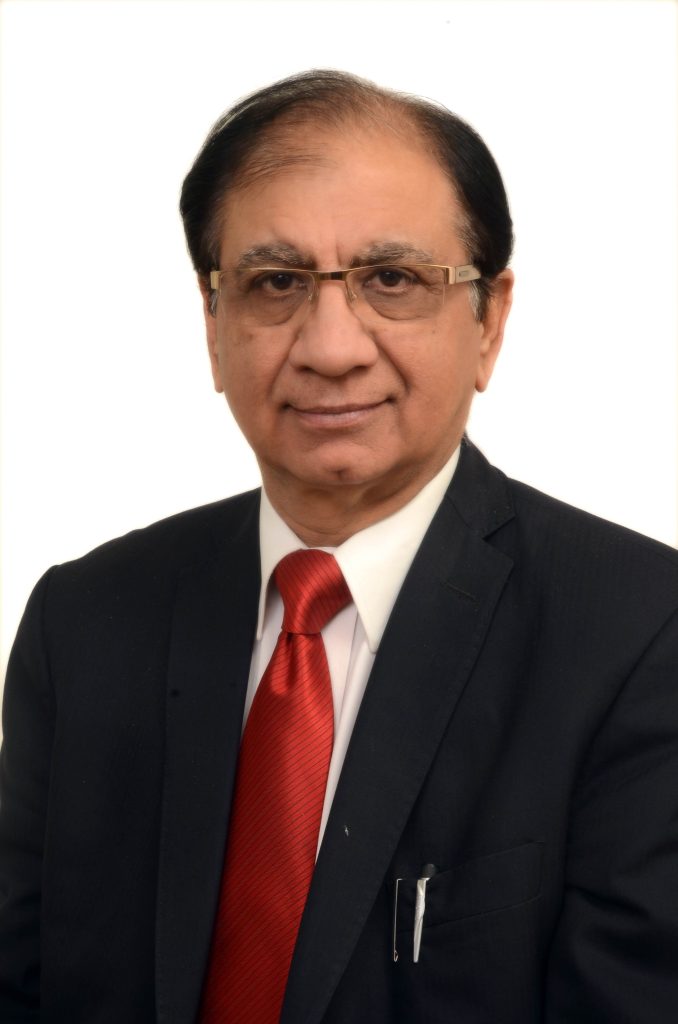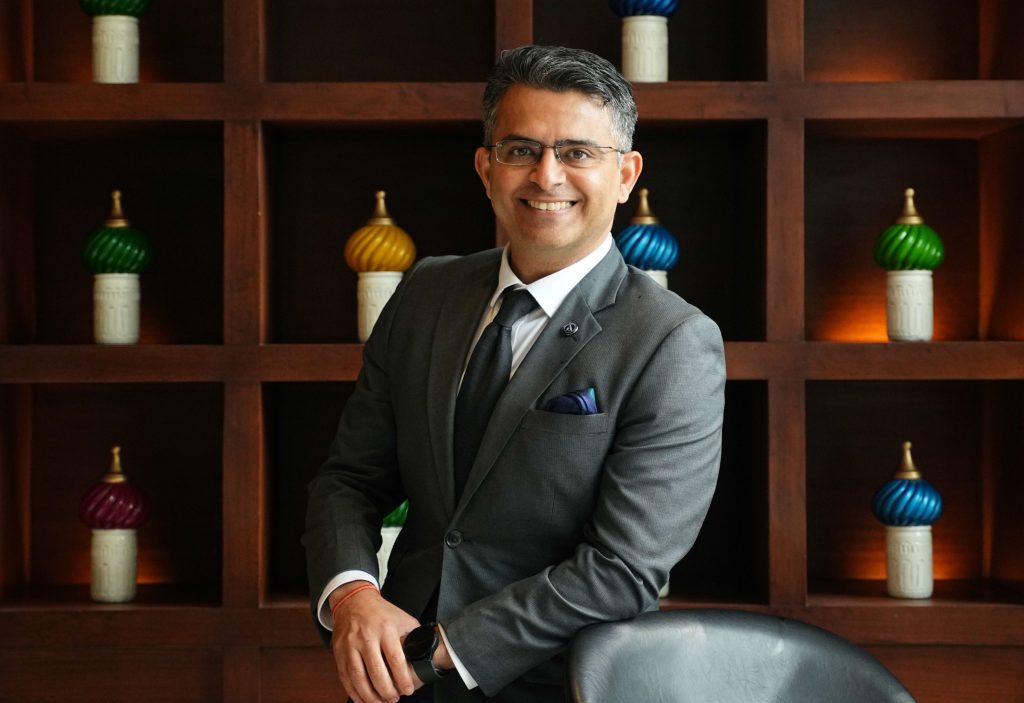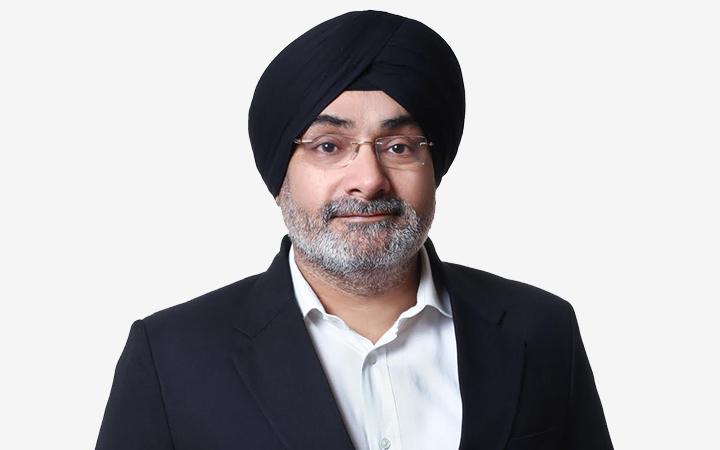Despite India’s rich natural and cultural assets and its status as one of the world’s fastest-growing economies, its MICE sector remains largely underutilized, holding less than 1% of the global market. Although India has seen steady growth in the number of conferences and exhibitions, its global ranking remains low, signalling vast and unexplored opportunities. The current gap between potential and opportunities indicates the lack of a solid foundation that, with the right initiatives, could position India to compete with leading international MICE hubs.
This story talks to the stalwarts in the global MICE arena and seeks to explore India’s MICE landscape, highlighting both its potential and its current challenges. Through detailed analysis and expert insights, it will shed light on whether India is poised for rapid growth in this sector or if it will continue to fall short of its full potential as a global MICE powerhouse.
India’s as a Global MICE Destination
In an exclusive interaction with T3, Senthil Gopinath, Chief Executive Officer of ICCA, expressed that business events account for approximately 20-25% of India’s total tourism revenue. According to Gopinath, there is significant growth potential in the region, and India is well-positioned to rise as a key destination for global events.To substantially increase this share, Gopinath suggested several strategic actions. These include upgrading infrastructure to accommodate large-scale events, intensifying marketing efforts to position the country as a premier business events destination, investing in workforce training, and fostering collaborations with international associations.He also noted that local economies benefit from association conferences and conventions through job creation, tourism spending, and the lasting impact associations leave when they engage with local communities. This legacy includes the exchange of ideas, improving the lives of community members, interfacing with decision-makers and policymakers, and supporting the transfer of cultural and ideological assets.

“It would be beneficial for decision-makers to create more targeted marketing aimed at promoting India as a viable destination for large-scale business conferences and events, showcasing the interesting cultural and culinary aspects of the region. Of course, financial incentives are always a part of attracting international business, and these actions, in conjunction with simplifying visa procedures, could be beneficial in increasing interest in India as a destination for international business events” Gopinath suggested. By addressing these areas, India can unlock the full potential of its meetings and events industry and become a more competitive player on the global stage.
MICE Maange More…
Discussing India’s share in the global MICE landscape, Gopinath emphasized that the country has made remarkable progress in building infrastructure and positioning itself as a prime destination for international meetings and events. “However, the availability of venues and resources still lags the rising demand for large-scale business events. Balancing supply and demand is one challenge facing India’s business events market,” Gopinath added. Due to economic growth, there’s been an increased demand for meetings and events in the region, and global associations and companies are increasingly considering India for conferences and conventions.
He further added that while India has been investing in infrastructure upgrades, there is still room for growth. “Many regions may lack venues large enough to accommodate large-scale events, and issues such as transport, security, and regulations also remain areas of concern,” Gopinath concluded.
Demand Vs Supply, Ground Reality & Challenges
According to the ICCA Country and City Rankings 2019, the USA remained the top country, hosting 934 of the total 13,254 meetings. The top 20 countries largely remained unchanged, with some alternating by one or two positions. India, with 158 meetings, ranked 28th in the 2019 ICCA rankings.
Chander Mansharamani, Managing Director of Alpcord Network Travel & Conferences Management Company, shared with T3 that the MICE segment contributes significantly to overall tourism, with the estimated market size of MICE in India being ₹37,576 crores, of which nearly 60% comes from meetings & incentives.

He cited statistics released by ICCA and mentioned that the global India MICE market is valued at USD 3.30 billion and is expected to reach USD 10.50 billion by 2030. Regionally, Europe hosted more than half of all meetings in ICCA’s latest assessment, followed by Asia at 23%. “There is a balance between supply and demand in India’s MICE market. Moving forward, we need to understand that MICE is not just an industry, it is an economic activity. Today, India has the requisite infrastructure, connectivity, and, moreover, India’s perception as a global leader is growing along with its economy.”
He further added that during India’s G-20 Presidency, more than 200 meetings were organized in 56 cities across India, showcasing the country’s robust MICE infrastructure as well as its cultural and natural heritage to the world. “We need to carry this momentum forward and firmly establish India as a global leader in MICE. Most important is to have a roadmap and a MICE policy in place,” Mansharamani expressed.
Commenting on the India MICE tourism market, Mufaddal Dahodwala, Managing Partner of ICE India, noted that it is estimated to be worth around USD 1.3 billion, contributing approximately 0.5% to the country’s overall tourism revenue. “While this figure represents significant potential, it also highlights underutilization,” Dahodwala stated. To boost this contribution, he suggested strategic steps such as developing world-class convention centres, improving infrastructure, easing visa regulations, offering financial incentives, and promoting India as a MICE destination through targeted marketing. Collaboration between the government and private sectors can help facilitate the creation of specialized MICE hubs.
According to him, “Currently, the supply of MICE facilities does not fully meet the growing demand. Key barriers include inadequate infrastructure, a lack of large-scale convention centers, limited international connectivity to second-tier cities, bureaucratic hurdles, high GST rates, and the absence of attractive incentive schemes. Compared to destinations like Dubai and Singapore, India’s GST rates on MICE-related services are significantly higher, making it less competitive in terms of pricing.”
He also noted that countries like Singapore offer generous incentive schemes to attract international events, including financial grants, subsidies, and support services. Introducing similar subsidies or incentive programs in India could make the country more appealing to global event organizers by offsetting costs and adding value.

Rubin Cherian, General Manager of Novotel Hyderabad Convention Centre & Hyderabad International Convention Centre (HICC), shared that the MICE sector is a key contributor to India’s overall tourism. To further boost this contribution, the focus should be on enhancing infrastructure, simplifying visa procedures, and promoting India’s diverse destinations. Additionally, continued investment in technology, marketing, and government support will be crucial. “The demand for MICE in India has steadily risen, with international events such as the G20 meetings showcasing India’s capabilities. However, supply-side gaps remain, particularly in the availability of world-class venues and ease of accessibility, especially in Tier 2 and Tier 3 cities,” Cherian stated. “The main barriers include infrastructure limitations across the country, logistical bottlenecks, and visa complications. India faces tough competition from global hubs like Singapore and the UAE, which have more streamlined systems in place.”
Manpreet Bindra, FCM Asia Meetings & Events Leader, expressed that India is witnessing increasing demand for high-quality MICE infrastructure, along with high-end hotels and transportation services. While major cities like Delhi, Mumbai, and Bengaluru are well-equipped, Tier 2 and Tier 3 cities have yet to develop similar capacities. He added, “This creates a demand that exceeds the existing supply, especially for large-scale, high-end MICE events. During peak season, it becomes extremely competitive to secure popular venues.”
He further noted that the MICE sector accounts for approximately 1-3% of India’s tourism revenue. “Despite its seemingly small share, it’s variable due to the spending habits of business travellers, which far exceed those of leisure travellers,” Bindra stated. “Infrastructure is a challenge, as although metro cities have some large-scale venues, their numbers are insufficient to meet the growing demand for larger international MICE events, where Tier 2 and Tier 3 cities present an opportunity.”
He suggested that although e-visas and visa-on-arrival facilities have improved, more can be done. “Multiple clearances for licensing and permissions for large events cause delays and increase costs. While India has talented individuals, there is still a gap in the number of skilled workers needed to manage large and complex events. Recruiting and training the workforce should be an ongoing initiative to expand the talent pool. Perception is key, and investing in branding and marketing India as a MICE destination would undoubtedly raise more awareness.”
Similarly, Manuj Ralhan, General Manager of Novotel Jaipur Convention Centre, stated that India’s lower position in MICE tourism can be attributed to a lack of focused strategy, the absence of a system for tracking national and international MICE events, high tax structures and costs, challenges in the visa application process, and a lack of standardization in processes and services. He further pointed out that successful international cities have convention bureaus that market their destinations and provide support to organizations and associations hosting events, whereas India lacks such city convention bureaus. Ralhan also suggested that improvements in flight connectivity and road infrastructure would greatly help enhance the current situation.

“In my opinion, the most important priority for India is to aggressively market ourselves and our tourist locations as MICE destinations internationally, and participate in all convention/MICE trade fairs, and also work closely with international associations to bid for and bring large conferences and conventions to India.”
He also highlighted that the industry is experiencing significant growth, driven by globalization of business and the rapid economic development of certain cities and countries. “Asia-Pacific accounted for 22.86% of global revenue in 2023. India’s share in the international MICE market is slightly more than 1% of the total. The India MICE market is expected to grow anywhere between 10% and 13% yoy as central and state governments increasingly support MICE destinations in India,” Ralhan added.
He noted that India’s MICE industry is on the cusp of a remarkable transformation, fueled by the emergence of some excellent venues such as Yashobhoomi, Jio World Convention Centre, Bharat Mandapam, Jaipur Exhibition & Convention Centre managed by Accor in Jaipur, BEC, BIEC, and the announcement of Rajasthan Mandapam by the current Finance Minister.
Ministry’s efforts to uplift MICE tourism in India
Under Incredible India campaign, the Ministry of Tourism (MoT) launched a new sub-brand, ‘Meet in India,’ aimed at promoting the country as a premier MICE destination globally. The initiative includes dedicated marketing efforts through social media platforms, a specialized app, and active participation in MICE exhibitions, positioning India as a key player in the international MICE market. Additionally, during India’s G20 Presidency, over 200 meetings were held across 56 cities, highlighting the country’s MICE infrastructure and capacity while showcasing its rich cultural and natural heritage to a global audience.

Supporting the same step, Dahodwala added that such initiatives and campaigns are positive steps that can lead to success if backed by consistent policy implementation and funding. “While the government is showing signs of prioritizing the MICE sector, addressing fiscal policies and introducing incentive programs is crucial. India can learn from global leaders like Singapore, which not only offers low GST rates but also provides comprehensive incentive packages that include funding support, marketing assistance, and logistical support for event organizers,” suggested Dahodwala.
Echoing Dahodwala’s perspective, Cherian added that the ‘Meet in India’ initiative is a promising start in promoting India as a global MICE destination. “Real-world success will depend on collaborative efforts between the government and private sector,” added Cherian. “India can draw lessons from Singapore and Japan in terms of government backing, ease of logistics, and technology-driven event management. Prioritizing seamless connectivity, reducing bureaucratic hurdles, and fostering public-private partnerships will be essential to India’s MICE growth,” Cherian opined.
In agreement, Bindra added that the MoT’s ‘Meet in India’ focus on enhancing infrastructure, skill development, and international promotion, which could greatly boost India’s attractiveness as a MICE destination if implemented effectively. “India is prioritizing the MICE sector and can draw lessons from leading destinations such as Singapore and Dubai by investing in modern convention facilities, providing streamlined visa and travel services, and promoting MICE tourism through public-private partnerships,” added Bindra.
To boost MICE tourism and translate it into real-world success, Mansharamani added that the MoT needs to initiate thorough research to assess the size of the global and domestic MICE market and evaluate the economic impact of the MICE sector on the overall economy. The MoT should suggest incentives/subsidies/promotional strategies based on international best practices. Additionally, he suggested developing case studies (at least three: one from the US, one from Europe, and one from Southeast Asia) of incentives offered by destination countries to gain a competitive edge at the bidding stage. Assessing the incentives in both financial and non-financial terms is also crucial.
Emerging Trends and Adoption of AI and Technology
Regarding trends, Gopinath mentioned that the global business events market is heavily affected by emerging tech trends, including the rise of hybrid events, VR, AI, data analytics, improved apps, and sustainable technologies. “India has made significant progress in the sector and stands on the cusp of a major transformation, especially in larger cities like Delhi and Mumbai. India is not as far along in the adoption of AI as some Western countries, but larger organizations are beginning to use these tools more frequently,” said Gopinath.
According to Dahodwala, emerging trends in the global MICE industry include virtual and hybrid events, AI-driven personalization, and the use of big data analytics to enhance attendee experiences. “India’s adoption of these technologies is gradual but growing”, he said. To stay competitive, he suggested India to invest in technological infrastructure and encourage innovation in event management solutions, including AI-driven platforms for attendee engagement and virtual event capabilities.
“Bleisure, converting a MICE event into work and pleasure by including places to visit and shopping, is growing in popularity,” added Ralhan. The use of AI to create apps for proper data collection, create platforms for interaction between participants, share the agenda, speakers, exhibitors, and make chat rooms, etc., are new and popular ways to make a trade fair or convention more fruitful. Photography tools used to capture attendance, etc., are some of the examples Ralhan shared with T3.
Bindra noted that disruptive technology is reshaping both in-person and hybrid events at a rapid pace. Driven by the need to adapt during the pandemic, events underwent a digital makeover that has left an indelible mark on the industry. “Hybrid events are here to stay, offering both virtual and in-person formats. AI will become the norm in event management, resulting in better experiences for attendees. Businesses are looking for meaningful ways to reduce their environmental and social impacts by prioritizing sustainable practices at the events they organize,” shared Bindra.

Bindra also added that India is gradually embracing AI-driven technologies and virtual events. Most of the corporate customers are embracing technology like AI, virtual reality, and live streaming. “By using event platforms and mobile event apps, we can capture attendee engagement rates, session popularity, and returning participants, which shines a light on what worked and what did not, providing in-depth data analysis and reporting”, he shared.
“Globally, hybrid events, AI-driven guest management, and virtual/augmented reality (VR/AR) are gaining traction in the MICE sector. India is gradually catching up, with cities like Mumbai and Bengaluru at the forefront. However, for a broader transformation, technology adoption needs to accelerate across various regions”, expressed Cherian.
Green MICE
As the global MICE industry embraces sustainable practices with growing enthusiasm, it’s essential to examine how India is integrating green solutions to create an eco-friendly MICE environment.
Talking about the same, Gopinath mentioned that India has a unique opportunity to integrate its natural resources, cultural heritage, and innovative technologies to promote more sustainable business meetings and events. “The country could benefit from partnering with venues that hold ‘green certifications’ and have already adopted more sustainable practices, like the IGBC (Indian Green Building Council). It’s also key to develop venues of this type in the region by converting existing buildings into event spaces rather than constructing new ones and implementing renewable energy practices, waste management and waste reduction, and addressing logistical and transport issues that contribute to waste and fossil fuels”, added Gopinath.
Also, he added that collaboration with organisations that focus on sustainability is important, as well as educating attendees about the event’s sustainability initiatives and encourage participation in green practices.
“By focusing on renewable energy, waste reduction, sustainable sourcing, and eco-friendly transportation, India can set new standards for sustainability in the global events industry, attracting environmentally conscious organizations and delegates. By adopting these practices, India can not only boost its competitiveness but also contribute to the global movement toward a sustainable future”, opined Gopinath.
Dahodwala suggested that India can lead in sustainable MICE tourism by incorporating eco-friendly practices such as utilizing renewable energy in venues, promoting zero-waste events, and leveraging local resources to reduce carbon footprints. According to him, emphasizing sustainability not only aligns with global efforts to combat climate change but also appeals to environmentally conscious organizations seeking green event options.
Cherian also mentioned that sustainability is becoming central to the future of MICE. India, with its cultural emphasis on sustainability, can promote eco-friendly materials, energy-efficient venues, and locally sourced goods. By encouraging more venues to adopt green certifications and practices, India can differentiate itself as a sustainable MICE destination, appealing to environmentally conscious event planners, he concluded.
“Simple changes such as adopting delegate apps and on-site technology to replace paper usage, collaborating with eco-conscious suppliers to reduce environmental impact, emphasising local and sustainable food and beverages, reducing and recycling waste, choosing venues committed to reducing carbon emissions and partnering with local charities during larger events”, suggested Bindra in developing action plans to minimise the environmental impacts of events.
Further on sustainability, Mansharamani added that the main source of carbon emission in MICE events are electricity usage and transportation, which needs to be attended. Besides, some ways to reduce waste includes providing drinking water, reducing single use plastic bottles and providing booths with the information about waste segregation. Also, low waste catering, seasonal decoration, reusable products, paper free advertising are also some of the aspects that can be addressed when conducting events, meetings or conferences.







